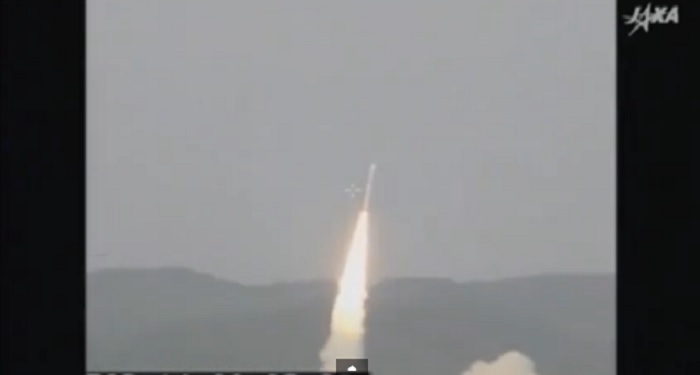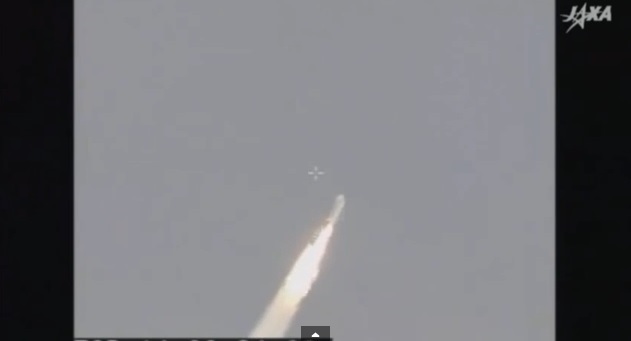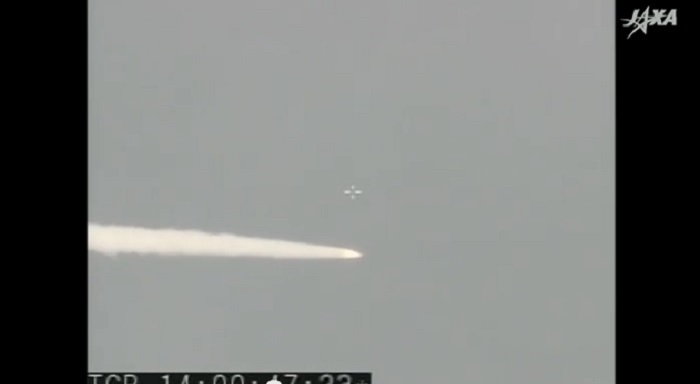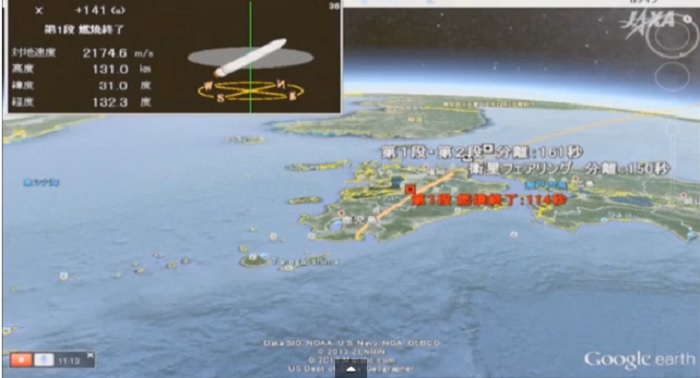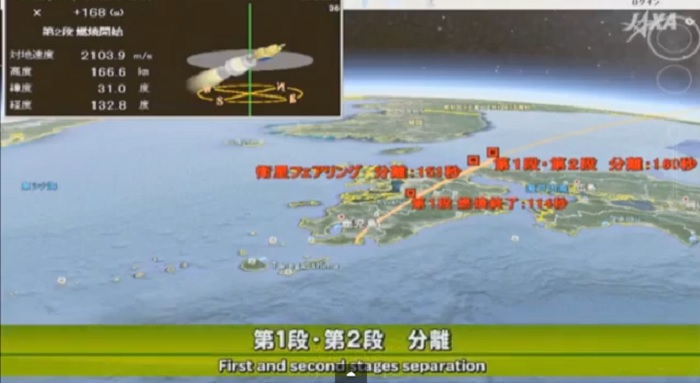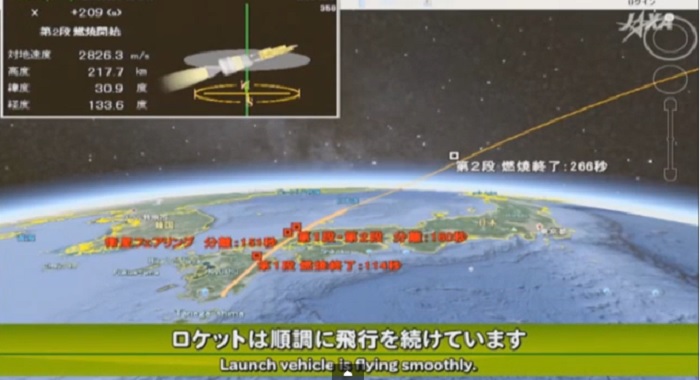.
21.05.2013
Mission-Update:
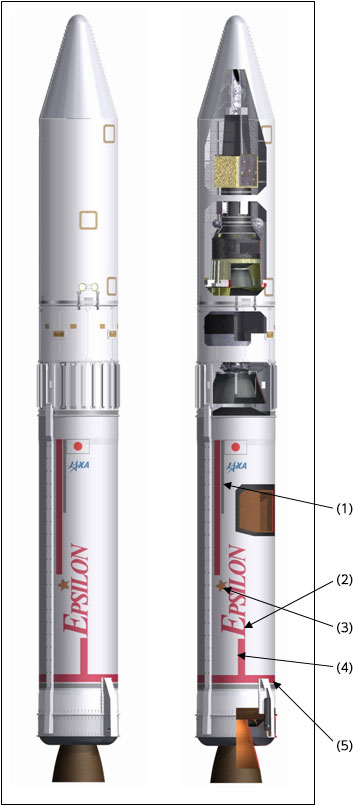
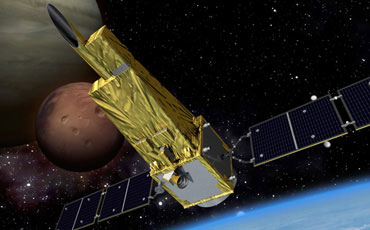
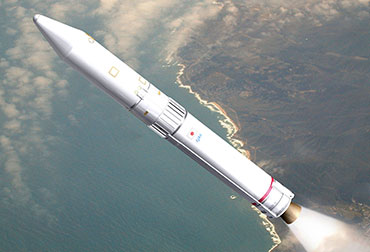
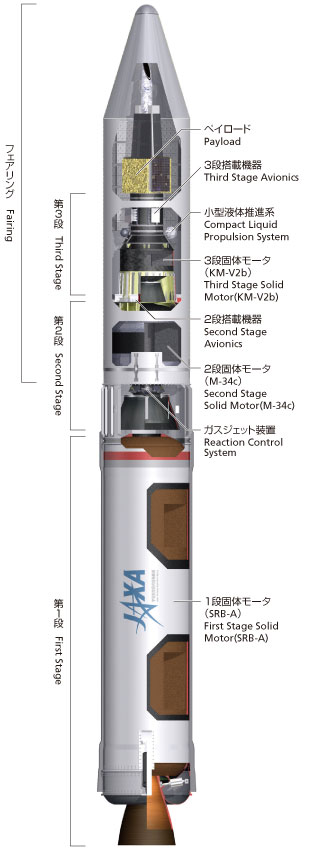
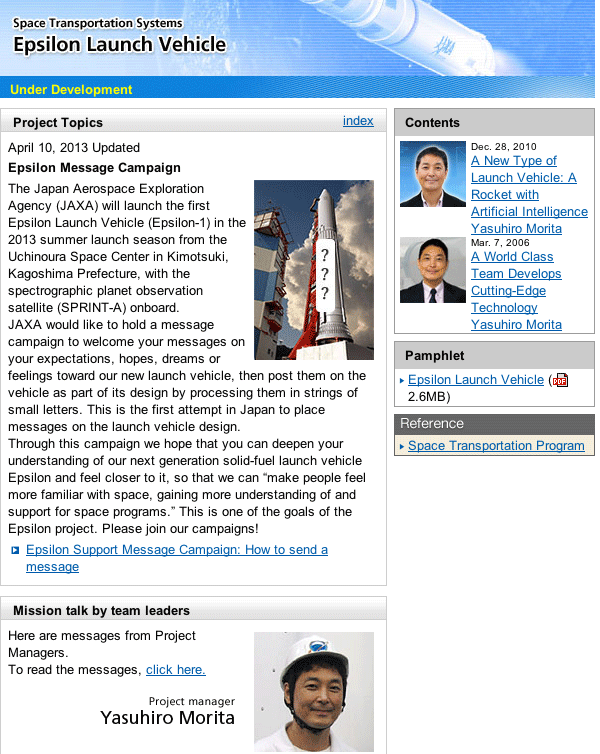
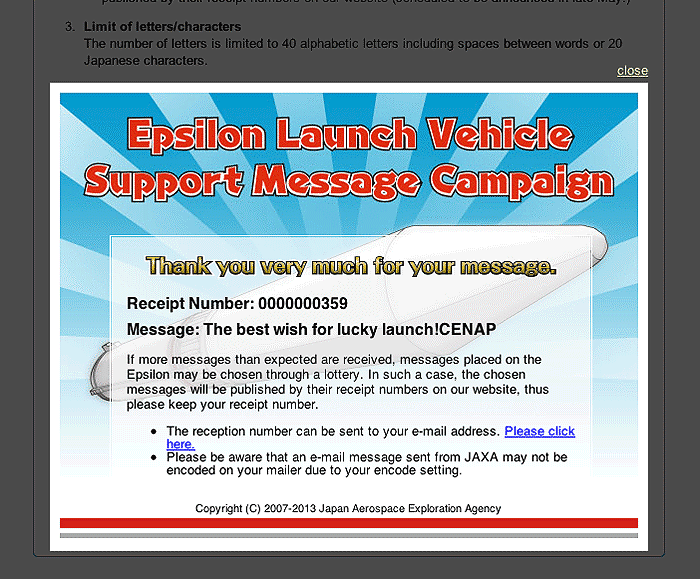
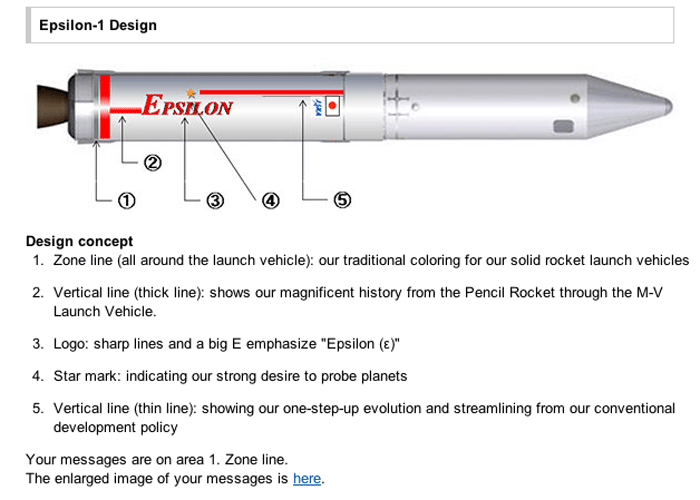
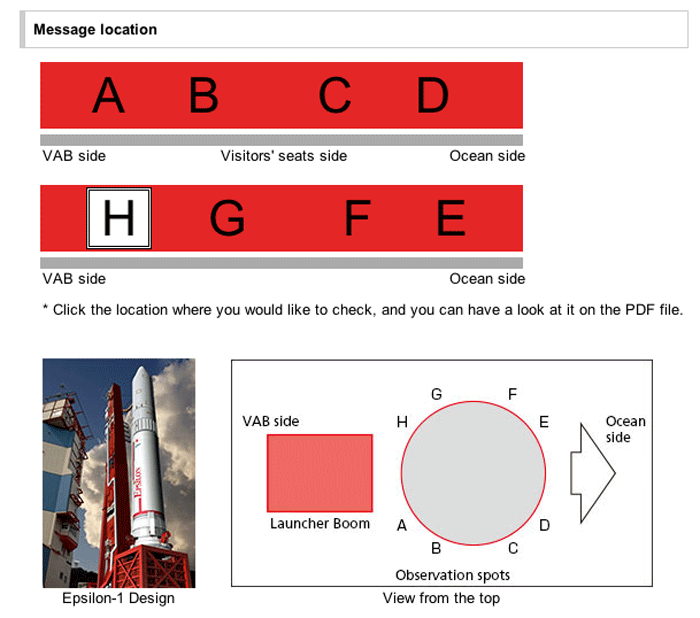

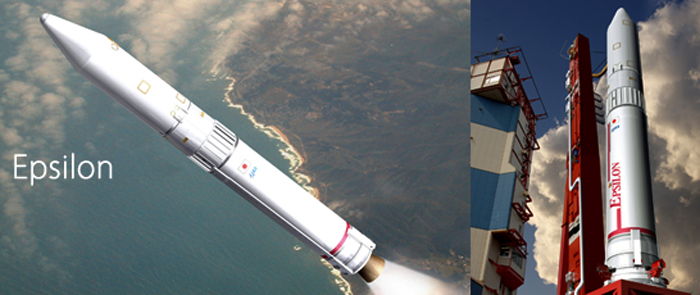
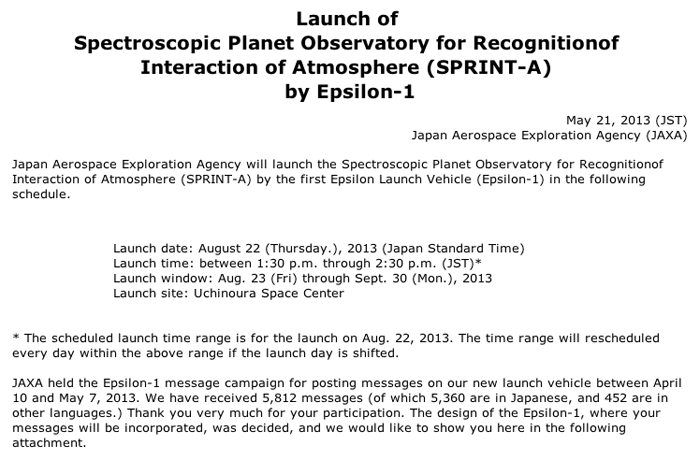

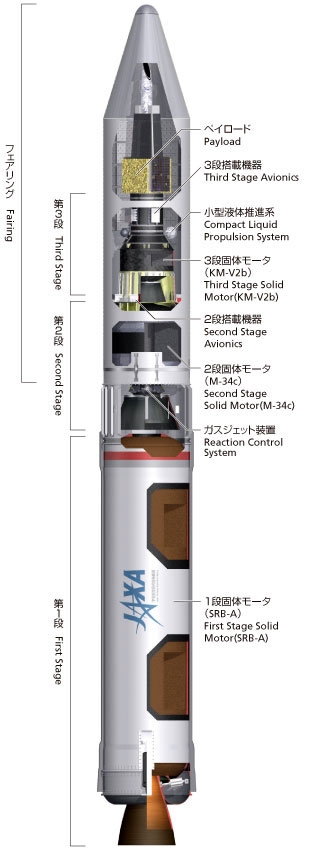
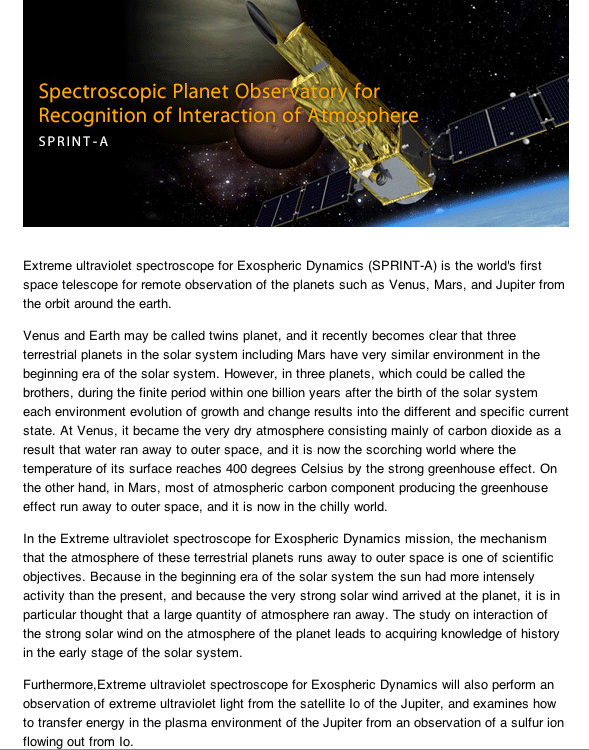
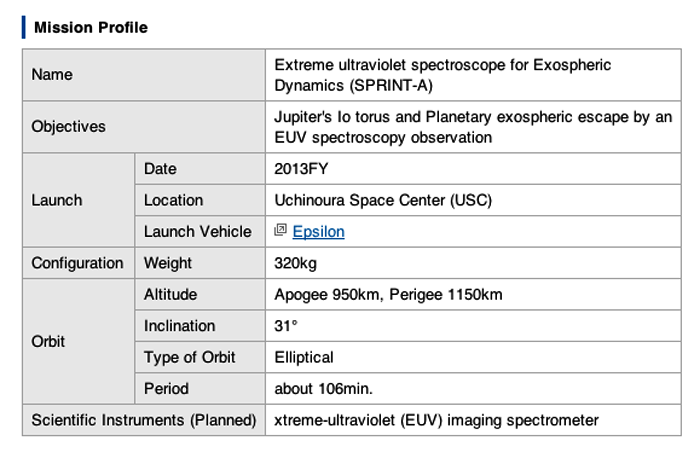
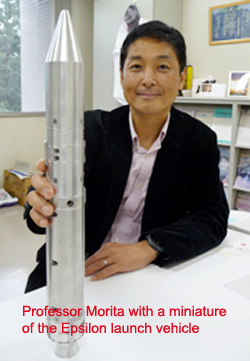
Launch Postponement and Launch Time Change
for Epsilon Launch Vehicle
with SPRINT-A onboard
JAXA made sure that the same incompatibility would not recur through a reconfirmation, and no problem was found.
* JAXA found an incorrect line routing in the signal relay equipment for checking the launch vehicle functions, and it has been rectified.
Aside from the above incompatibility, the launch time window was also changed to 1:45 to 2:30 p.m. from the previously set window of 1:30 to 2:30 p.m. as a result of the latest flight trajectory analysis by considering relative positions between the SPRINT-A and the sun after its separation from the Epsilon-1.
Scheduled launch time window: 1:45 thru 2:30 p.m.
Launch window: between Aug. 28 (Wed.) thru Sept. 30 (Mon.), 2013
Launch site: Uchinoura Space Center
* All dates and times are Japan Standard Time.
Jiji Press The Japan Aerospace Exploration Agency, or JAXA, said Thursday it has postponed the Aug. 22 launch of its new solid-fuel rocket, called Epsilon, until Aug. 27 due to an error in the ground control system.
The Epsilon rocket with an observation satellite is now scheduled to be launched from the Uchinoura Space Center in Kagoshima Prefecture between 1:45 p.m. and 2:30 p.m. that day.
The Japan Aerospace Exploration Agency on Tuesday unveiled its new solid-fuel rocket Epsilon before its launch with a scientific satellite next week.
Epsilon, a three-stage rocket with 24.4 meter in length, 2.6 meters in diameter and 91 ton in weight, is to be launched from the state-run agency's Uchinoura Space Center in southwestern prefecture of Kagoshima.
The rocket is a successor of the M-5 rocket that was retired in 2006 and is planned to carry a telescope named SPRINT-A, world's first space telescope for remote observation of planets.
The agency originally scheduled to launch the rocket Thursday but postponed until next Tuesday due to wrong wiring in communication equipment.
.
Update: 22.08.2013
Yesterday, JAXA (Japan Aerospace Exploration Agency), for the first time, unveiled their Epsilon rocket and began launch rehearsal in preparation for a scheduled August 27th launch.
Epsilon is a low-cost, high-performance, solid-fuel rocket co-developed by JAXA and IHI AEROSPACE Co.,Ltd. and designed to launch scientific satellites.
Epsilon features the world's first innovative launch system called "Mobile Launch Control" which allows for built-in checks to be conducted autonomously within the rocket's system. This allows staff to focus on high-level monitoring, making overall performance very smooth.
A spokesman joked that it is so easy to control that staff could monitor the rocket on their laptops while at Starbucks.
Quelle: Akihabara-News
.
Update: 26.08.2013
.
First Flight of Japanese 'Artificial Intelligence' Rocket Set for Tuesday
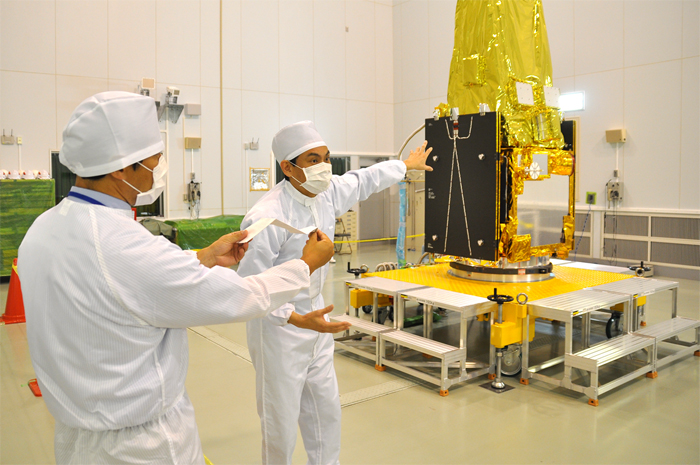
The SPRINT-A satellite undergoes final checkout, ahead of its scheduled launch aboard the first Epsilon rocket. Photo Credit: JAXA/ISAS
.
More than five decades of rocketry from Japan’s Kagoshima Prefecture will continue on Tuesday, 27 August with the maiden voyage of the new Epsilon vehicle to insert an ultraviolet observatory into low-Earth orbit to observe Venus, Mars, and Jupiter. The 700-pound Spectroscopic Planet Observatory for Recognition of Interaction of Atmosphere (SPRINT-A) will utilize an extreme ultraviolet spectrometer and guiding camera and will spend about a year in orbit. Yet as exciting as this scientific payload may be, the Epsilon itself carries much promise for the Japan Aerospace Exploration Agency (JAXA). The rocket’s project manager has described it as a vehicle which will literally “open up the future.”
The 78-foot-tall Epsilon vehicle marries one Solid Rocket Booster (SRB) from the H-IIA rocket as its first stage with upper-stage hardware from the 2006-retired M-V rocket. As a launcher, it is reportedly capable of transporting up to 2,600 pounds of payload into low-Earth orbit. Originally scheduled to fly on 22 August from the Uchinoura Space Center in Kagoshima, its launch date was postponed by five days, earlier this month, as JAXA required additional time to resolve a problem surrounding an incorrect line routing in the signal relay equipment used to check Epsilon’s critical functions. Current plans place the launch within a 45-minute “window” from 1:45-2:30 p.m. Japan Standard Time (12:45-1:30 a.m. EDT) on 27 August.
More than five decades of rocketry from Japan’s Kagoshima Prefecture will continue on Tuesday, 27 August with the maiden voyage of the new Epsilon vehicle to insert an ultraviolet observatory into low-Earth orbit to observe Venus, Mars, and Jupiter. The 700-pound Spectroscopic Planet Observatory for Recognition of Interaction of Atmosphere (SPRINT-A) will utilize an extreme ultraviolet spectrometer and guiding camera and will spend about a year in orbit. Yet as exciting as this scientific payload may be, the Epsilon itself carries much promise for the Japan Aerospace Exploration Agency (JAXA). The rocket’s project manager has described it as a vehicle which will literally “open up the future.”
The 78-foot-tall Epsilon vehicle marries one Solid Rocket Booster (SRB) from the H-IIA rocket as its first stage with upper-stage hardware from the 2006-retired M-V rocket. As a launcher, it is reportedly capable of transporting up to 2,600 pounds of payload into low-Earth orbit. Originally scheduled to fly on 22 August from the Uchinoura Space Center in Kagoshima, its launch date was postponed by five days, earlier this month, as JAXA required additional time to resolve a problem surrounding an incorrect line routing in the signal relay equipment used to check Epsilon’s critical functions. Current plans place the launch within a 45-minute “window” from 1:45-2:30 p.m. Japan Standard Time (12:45-1:30 a.m. EDT) on 27 August.
Moving forward from desktop and laptop computers, it is Morita’s hope that by 2017 the Epsilon will be in a position to “monitor and judge its own flight safety autonomously, so that we can remove the radar and antenna used to track and send commands to the rocket.” By assigning further artificial intelligence assets to the vehicle—including the capability to act as its own Range Safety Officer and destroy itself in the event of off-nominal events—the Epsilon will eliminate the need for expensive, ground-based hardware and further simplify launch and tracking facilities.
As the maiden flight of the Epsilon, Tuesday’s mission has attracted a great deal of publicity, both in Japan and around the world. In April-May 2013, it was the subject of a New Launch Vehicle Message Posting Campaign. Some 5,812 messages—the vast majority in Japanese and a few hundred in other languages—were received as part of an effort to share individuals’ “expectations, hopes, dreams, or feelings toward our new launch vehicle.” JAXA then processed these messages into strings of small letters on the Epsilon itself, in order to “make people feel more familiar with space, gaining more understanding of and support for space programs.” According to JAXA, this was a key goal of the Epsilon project.

.
Update: 29.08.2013
.
Computerfehler bei der Boden Leitstelle verhinderte den Start von Epsilon-1
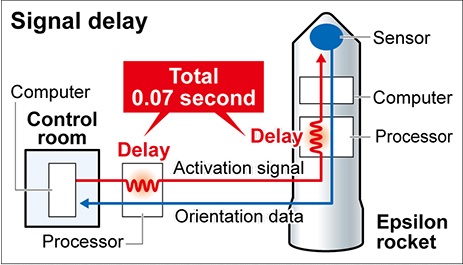
Suspended JAXA rocket launch attributed to signal delay
The recent suspension of the much-awaited launch of a new rocket model in Kagoshima Prefecture was attributed to the failure of its automatic body inspection system, the Japan Aerospace Exploration Agency (JAXA) said Aug. 30.
The Epsilon rocket was scheduled to have been launched from the Uchinoura Space Center on Aug. 27.
The rocket’s automatic body inspection system is a groundbreaking feature that enables a control room computer to prompt a computer mounted on the rocket to measure the orientation of the rocket body with its sensors. After receiving calculation output from the onboard computer, the control room computer automatically decides whether to go ahead with the launch.
But that new feature backfired.
During preparations for the launch, the activation signal incurred an unforeseen delay of 0.07 second in passing through two processors. That caused the returning signal to arrive behind schedule, preventing the computer in the control center from receiving the signal within the prescribed time frame.
That led the computer in the control center to determine that the rocket had an anomalous orientation, according to JAXA officials.
JAXA officials said they hope to reschedule the launch at an earliest possible date in September.
Quelle: JAXA
.
The Japan Aerospace Exploration Agency (JAXA) decided to postpone the launch of the first Epsilon Launch Vehicle (Epsilon-1) with the Spectroscopic Planet Observatory for Recognition of Interaction of Atmosphere (SPRINT-A) onboard on August 27 from the Uchinoura Space Center.
As a result of our cause investigation of the postponement and re-examination of the Epsilon-1, the new launch date will be September 14, 2013 (Japan Standard Time) or later.
Quelle: JAXA
.
Update: 10.09.2013
.
.
Update: 13.09.2013
Japan's Epsilon Rocket Stands Ready for Maiden Launch on Saturday
Three weeks after “an attitude abnormality” forced its first launch attempt to be scrubbed, the Japan Aerospace Exploration Agency (JAXA) is ready to fly its first Epsilon rocket from the Uchinoura Space Center in Kagoshima Prefecture. According to JAXA, the new vehicle will liftoff at 1:45 p.m. Japan Standard Time (12:45 a.m. EDT) Saturday 14 September, at the opening of a 45-minute “launch window”. The Epsilon-1 mission will transport the 700-pound Spectroscopic Planet Observatory for Recognition of Interaction of Atmosphere (SPRINT-A) into low-Earth orbit to observe Venus, Mars and Jupiter with a battery of ultraviolet spectrometers and guiding cameras.
Originally scheduled to fly on 27 August, Epsilon-1 was postponed when “an automatic stop alarm was issued as an attitude abnormality was detected approximately 19 seconds prior to the liftoff time, during the automatic countdown sequence”. In the aftermath of the scrub, JAXA engineers set to work tackling the cause of the problem and on 5 and 8 September conducted a pair of launch simulations to resolve a “time-synching” glitch between the ground and on-board computers. The results appear to have been successful, for on Thursday 12 September JAXA announced the new Saturday launch target date.
Described by its Project Manager as a vehicle which will literally “open up the future”, the Epsilon stands 78 feet tall and marries one Solid Rocket Booster (SRB) from Japan’s H-IIA rocket with upper-stage hardware from the 2006-retired M-V launcher. The Epsilon is reportedly capable of lofting up to 2,600 pounds of payload into low-Earth orbit, but its maiden flight was already delayed by five days past 22 August, as JAXA needed additional time to resolve a problem surrounding an incorrect line routing in the signal relay equipment used to check the rocket’s critical functions. The launch attempt on 27 August proceeded relatively smoothly until the last-minute scrub.
It is the cost savings – estimated to be about 30 percent better than the M-V – which JAXA is particularly keen to stress about the new Epsilon. Saturday’s flight is estimated to cost in the region of 5.3 billion yen ($53 million), significantly lower than the 7 billion yen ($70 million) for an M-V, and such savings have been made primarily through the streamlining of launch procedures. It is anticipated that subsequent Epsilon launches may bring costs still lower, into the 3.0-3.8 billion yen ($30-38 million) bracket.
Japan has been flying solid-fueled “pencil” rockets since the mid-1950s and Epsilon stands firmly upon the shoulders of previous titans, as well as utilizing new, cutting-edge technology. “We aim to greatly simplify the launch system by using artificial intelligence,” said Project Manager Yasuhiro Morita, quoted in a JAXA interview. Morita is a professor in the Department of Space Systems and Astronautics with the Institute of Space and Astronautical Science (ISAS), a subdivision of JAXA. “Today, a typical scenario is hundreds of people assembling at the launch center and working for several months in preparation for a launch. On the day of the launch, dozens of people are in the control room, monitoring every aspect. The Epsilon launch vehicle will drastically change this picture.” By running autonomous health and other checks, supported by artificial intelligence, it is hoped that control personnel with ultimately be able to run the whole show from a pair of laptop computers.
“Rockets use technology from many generations ago,” explained Morita, “so they are like a showcase of deficiencies. There has long been a notion that new technology should be tested over an extended period of time before being used in actual launch vehicles. Consequently, the latest artificial intelligence applications have not yet been employed in rockets. The Epsilon launch vehicle will be the first rocket with artificial intelligence that will perform checks and monitor its own operation autonomously.”
Moving forward from desktop and laptop computers, it is Morita’s hope that by 2017 the Epsilon will be in a position to “monitor and judge its own flight safety autonomously, so that we can remove the radar and antenna used to track and send commands to the rocket.” By assigning further artificial intelligence assets to the vehicle—including the capability to act as its own Range Safety Officer and destroy itself in the event of off-nominal events—the Epsilon will eliminate the need for expensive, ground-based hardware and further simplify launch and tracking facilities.
As the maiden flight of the Epsilon, Saturday’s mission has attracted a great deal of publicity, both in Japan and around the world. In April-May 2013, it was the subject of a New Launch Vehicle Message Posting Campaign. Some 5,812 messages—the vast majority in Japanese and a few hundred in other languages—were received as part of an effort to share individuals’ “expectations, hopes, dreams, or feelings toward our new launch vehicle.” JAXA then processed these messages into strings of small letters on the Epsilon itself, in order to “make people feel more familiar with space, gaining more understanding of and support for space programs.” According to JAXA, this was a key goal of the Epsilon project.
Testing and processing of the new rocket has gone relatively smoothly, with its upper stage motor static-fired in September 2011 to evaluate the performance of insulation material, followed by last October’s extension test of the second stage motor nozzle. More recently, in April 2013, it was reported that a full-scale model of Epsilon had been transferred from the maintenance tower to the launch pad to demonstrate rollout and other pre-launch protocols.
Liftoff on Saturday will begin with the ignition of the first-stage’s Nissan-built solid motor, producing an estimated 505,000 pounds of thrust. This will burn for about two minutes, after which the second stage—a modified version of the M-V’s M-34 upper stage, also solid-fueled, with an extendible nozzle—will pick up the thrust for 104 seconds to execute the next stage of the rocket’s climb to orbit. The third stage, based upon the KM-V2b upper stage from the M-V, will then fire for approximately 91 seconds, after which a hydrazine-fed small liquid propulsion system will provide the final boost. According to JAXA’s Epsilon press kit, this final stage will perform two burns and SPRINT-A will be separated from the vehicle about 61 minutes after launch.
The satellite is expected to operate for about a year in an orbit of 590-715 miles, inclined 31 degrees to the equator, from which it will observe the magnetospheric environments of Venus, Mars, and Jupiter. “Capturing the extreme ultraviolet rays emitted from a planet and its periphery, which cannot be observed from the ground, allows us to collect information on the atmosphere that flows into space and the magnetosphere covering the planet,” noted JAXA in its SPRINT-A mission brochure. “This enables us to analyze the composition of the atmosphere and the behavior of the magnetosphere. Our primary theme is each planet’s magnetosphere, the region where the magnetic field of a planet has influence.” Jupiter’s magnetic field is 10,000 times stronger than that of Earth and rotates on its axis at a high rate of around 10 hours per cycle, whereas those of Venus and Mars are far weaker. SPRINT-A will focus on the interactions between planetary magnetospheres and the solar wind.
Quelle: American Space
-
New Launch Date and Time
for Epsilon-1 with SPRINT-A Onboard
Japan Aerospace Exploration Agency (JAXA)
Japan Aerospace Exploration Agency (JAXA) would like to announce that we have set the launch date and time of the first Epsilon Launch Vehicle (Epsilon-1) with the Spectroscopic Planet Observatory for Recognition of Interaction of Atmosphere (SPRINT-A) onboard as follows.
Scheduled launch time: 1:45:00 p.m.
Scheduled launch time window: 1:45 thru 2:30 p.m.
* All date and times are Japan Standard Time.
.
Update: 14.09.2013
.
Launch Result of Epsilon-1 with SPRINT-A aboard
Japan Aerospace Exploration Agency (JAXA)
Japan Aerospace Exploration Agency launched the first Epsilon Launch Vehicle (Epsilon-1) with the Spectroscopic Planet Observatory for Recognition of Interaction of Atmosphere (SPRINT-A) onboard at 2:00 p.m. on September 14 (Sat.), 2013 (Japan Standard Time, JST) from the Uchinouora Space Center.
The launch vehicle flew smoothly, and, at about 61 minutes and 39 seconds after liftoff, the separation of the SPRINT-A was confirmed.
We would like to express our profound appreciation for the cooperation and support of all related personnel and organizations that helped contribute to the launch of the Epsilon-1.
At the time of the launch, the weather was cloudy, a wind speed was 8.1 meters/second from the east-north-east and the temperature was 27.2 degrees Celsius.
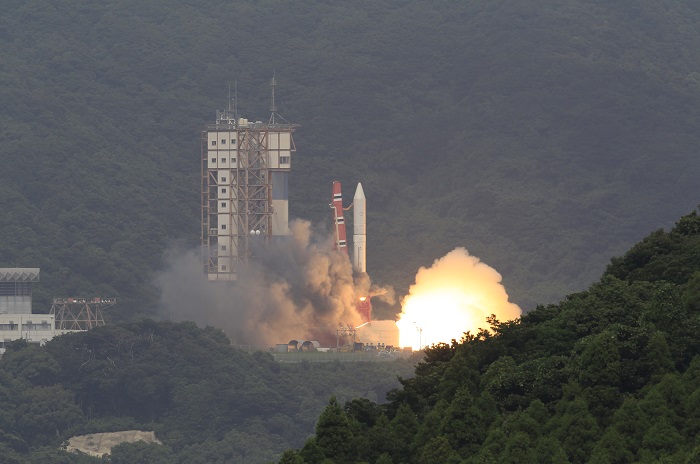
Japan Aerospace Exploration Agency launched the first Epsilon Launch Vehicle (Epsilon-1) with the Spectroscopic Planet Observatory for Recognition of Interaction of Atmosphere (SPRINT-A) onboard at 14:00 on September 14 (Sat.), 2013 (Japan Standard Time, JST) from the Uchinouora Space Center.
.
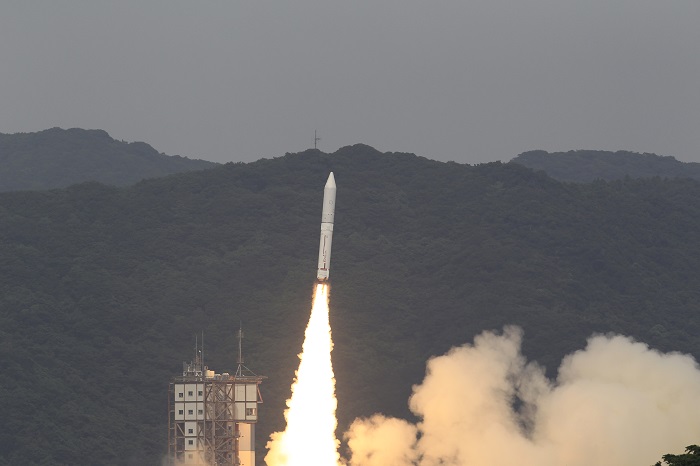
Japan Aerospace Exploration Agency launched the first Epsilon Launch Vehicle (Epsilon-1) with the Spectroscopic Planet Observatory for Recognition of Interaction of Atmosphere (SPRINT-A) onboard at 14:00 on September 14 (Sat.), 2013 (Japan Standard Time, JST) from the Uchinouora Space Center.
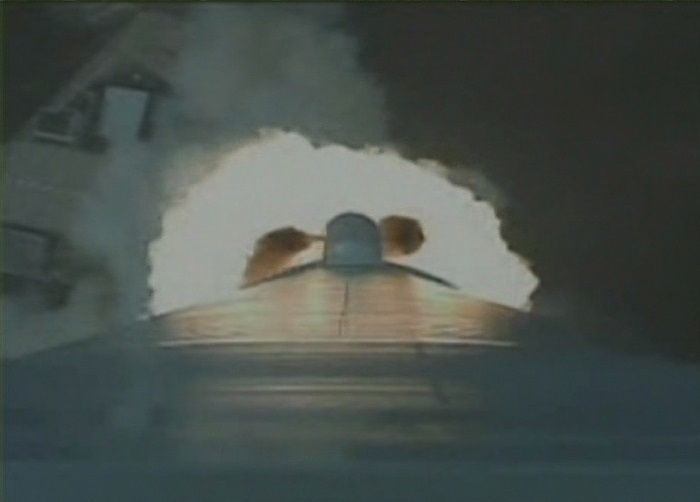
Japan Aerospace Exploration Agency launched the first Epsilon Launch Vehicle (Epsilon-1) with the Spectroscopic Planet Observatory for Recognition of Interaction of Atmosphere (SPRINT-A) onboard at 14:00 on September 14 (Sat.), 2013 (Japan Standard Time, JST) from the Uchinouora Space Center.
.
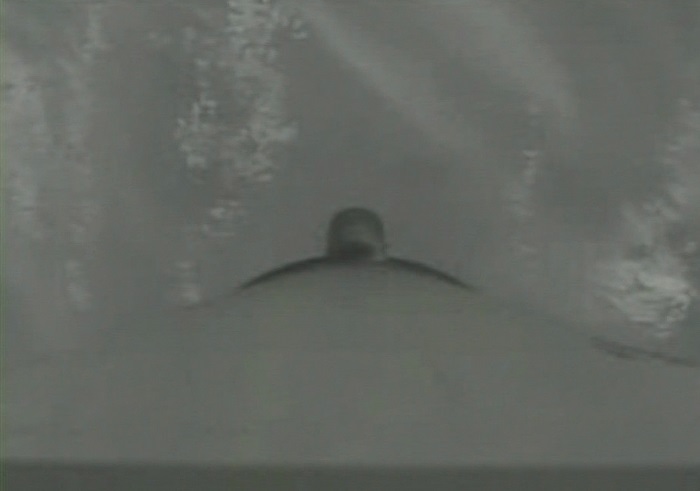
Japan Aerospace Exploration Agency launched the first Epsilon Launch Vehicle (Epsilon-1) with the Spectroscopic Planet Observatory for Recognition of Interaction of Atmosphere (SPRINT-A) onboard at 14:00 on September 14 (Sat.), 2013 (Japan Standard Time, JST) from the Uchinouora Space Center.
.
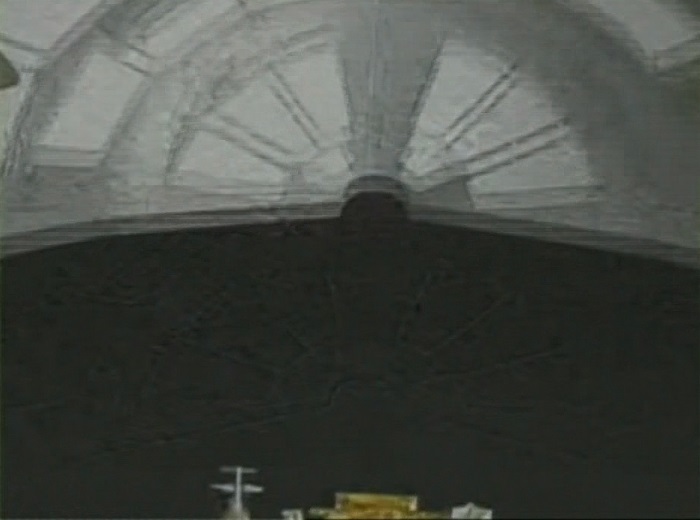
Japan Aerospace Exploration Agency launched the first Epsilon Launch Vehicle (Epsilon-1) with the Spectroscopic Planet Observatory for Recognition of Interaction of Atmosphere (SPRINT-A) onboard at 14:00 on September 14 (Sat.), 2013 (Japan Standard Time, JST) from the Uchinouora Space Center.
.
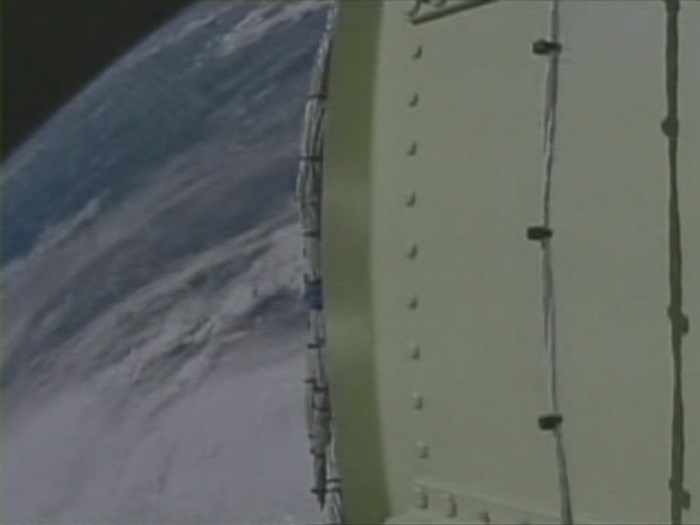
Japan Aerospace Exploration Agency launched the first Epsilon Launch Vehicle (Epsilon-1) with the Spectroscopic Planet Observatory for Recognition of Interaction of Atmosphere (SPRINT-A) onboard at 14:00 on September 14 (Sat.), 2013 (Japan Standard Time, JST) from the Uchinouora Space Center.
.
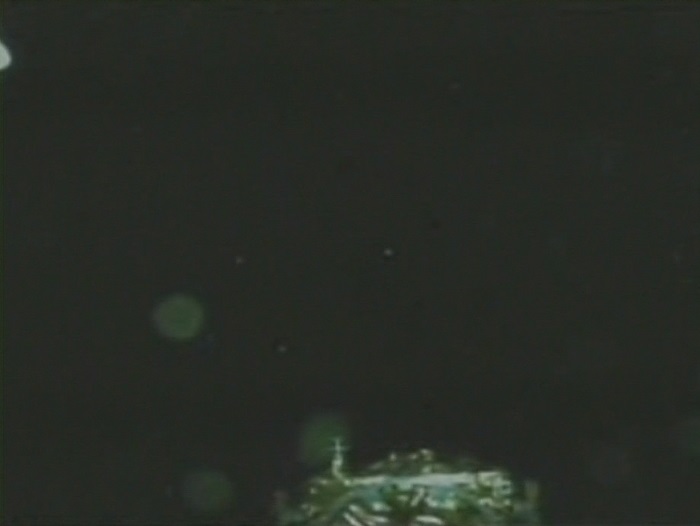
Japan Aerospace Exploration Agency launched the first Epsilon Launch Vehicle (Epsilon-1) with the Spectroscopic Planet Observatory for Recognition of Interaction of Atmosphere (SPRINT-A) onboard at 14:00 on September 14 (Sat.), 2013 (Japan Standard Time, JST) from the Uchinouora Space Center.
.

Quelle: JAXA
.
Update: 17.09.2013

